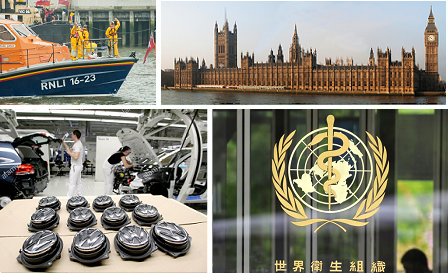1 Reflecting on organisations
One of the principal reasons for studying organisations in relation to environmental management is due to their significant influence on the environment in many different locales and habitats – aspects that you will explore later on. But organisations are also exceedingly diverse.
If we are to understand some of the ways in which organisations influence the environment, we first need to explore briefly what we mean by the term ‘organisation’.
Activity 1 Defining ‘organisation’
How would you define an organisation? Think about the kinds of organisations you engage with to help develop your answer.
Provide your answer...
Discussion
I’m thinking of my employer, my family, the group of people I play sport with, a retail store and my bank. They are all quite different. But the word ‘organisation’ suggests some structure and ordering which implies there is a purpose to the ordering – it is organised in a way to achieve something. These examples of organisations all have more than one person involved. Each person within the organisation might have slightly different roles or are performing the same role at different times. This suggests that structure, purpose and people are an important part of defining an organisation. Equally, perhaps it shouldn't be assumed that an organisation has to be human-centred. Do non-human organisations also exist? The collective nouns for many animals are suggestive of some sense of loose organisation: a pride of lions, a school of dolphins or a swarm of bees. Are these also organisations?
Some people interpret organisation very broadly to include non-human organisations. While this model answer also queries if organisations can be non-human, for the purposes of this course we will focus on human organisations.
Even within the human realm, it is often not easy to make sense of the diversity of organisations or understand their different types and configurations. A corporate bank is clearly very different to an independent café which is in turn very different to a local fire station, farm or a local residents’ group. As it is often the most obvious aspect of an organisation’s existence, should an organisation be defined by its building, geographic location, online presence, product or brand?
While it may be that an organisation’s existence may be implied by a building, product or brand, these facets of organisations do not convey the essential quality or component of an organisation: people.
In this course, we will use the term organisation to mean: ‘An organised body of people with a particular purpose [such] as a business, government department, charity’ (OED, 2014).
The simplicity of this definition may be a little surprising, but it offers an insight into organisations irrespective of their size, location and type. In short, this definition suggests organisations are, fundamentally, about three or more people engaging in some kind of organised activity for an agreed and mutual purpose.
You might like to consider the organisations you engage with regularly and see if this definition holds true in your opinion. What is clear is that the above definition gives rise to a question about purpose: what are the groups of people organised for?

